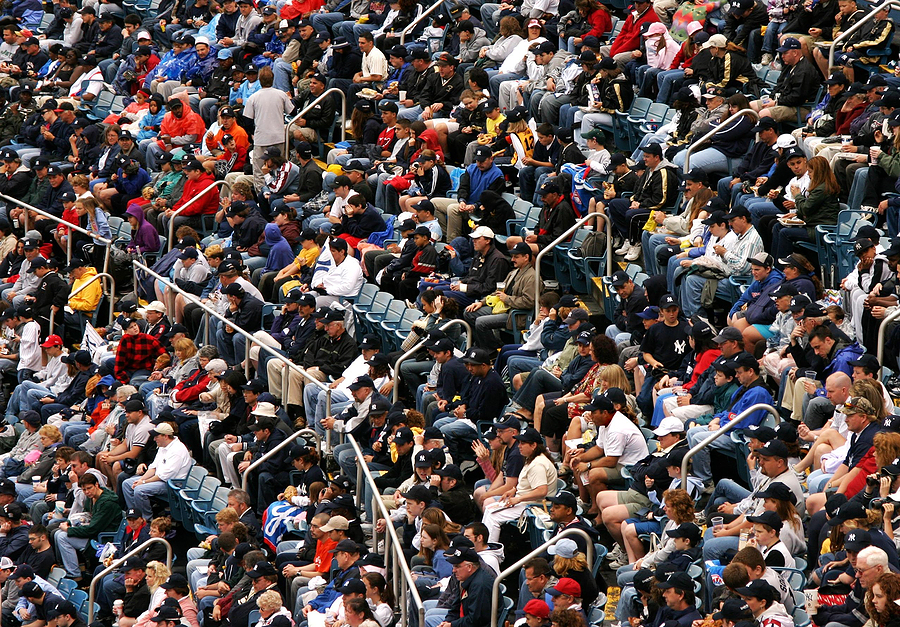Eight percent of fans who agreed to be tested after attending professional football and baseball games were too drunk to legally drive, a new study finds, and 40 percent had booze in their bodies.
The study has limitations: it does not disclose where the games took place, it excludes fans not old enough to legally drink and it was limited to those who agreed to participate.
But the findings do suggest that there’s a wider problem that could put plenty of people at risk after sporting events, said study lead author Darin Erickson, assistant professor of epidemiology at the University of Minnesota. Drunken people, after all, get into car accidents and cause many other problems when they are let loose from a party or bar.
“It may not seem like a lot when you say 8 percent leaving a game were above the legal limit, when you look at a big stadium that has 5,000 attendees,” he said, but over time, “if you look at the hundreds to thousands of games, this is a lot of intoxicated individuals.”
The study appears online and in the April 2011 issue of the journal Alcoholism: Clinical and Experimental Research. The study authors wanted to know if it would be feasible to ask fans to take Breathalyzer tests and respond to surveys as they leave a stadium.
Researchers approached fans as they left 13 Major League Baseball games and three National Football League games in 2006. The researchers recruited 382 people to participate: 264 after baseball games and 118 after football games. Almost 60 percent of the participants were men and 55 percent were ages 21 to 35. Only 14 percent were 51 and older.
Forty percent of the participants had alcohol in their systems at concentrations ranging from 0.005 (a tiny amount) to a whopping 0.22. Eight percent were at 0.08 or higher. Those who had been tailgating before the game were much more likely to have been legally drunk, as were those under age 35.
It was not clear how many of those who had been drinking planned to drive home.
The numbers provide insight into how many people leave sporting events with booze on board, Erickson said. In turn, the data could help policymakers figure out how to limit the problem, he said.
Ruth Engs, a professor at Indiana University who has studied college drinking, questioned the motives of the study. “Although the article does not come out and advocate eliminating alcohol from games, reading between the lines this appears to be the researchers’ possible future agenda,” she said.
Engs supports “responsible drinking” and suggests lowering the drinking age can be a way to promote it more effectively. As for the idea of banning booze at sporting events, she said, “Most adults in the United States do drink responsibly. Preventing adults from drinking a beer with their brats and hotdogs before a football game is not likely to succeed.”
Erickson denied that the study has a political agenda. “I don’t think there’s anything here that inherently leads toward prohibition.”
Another researcher who has studied alcohol use questioned whether the study adds anything new to existing findings. “It corroborates other research demonstrating that tailgating is associated with heavier drinking. However, I don’t think that any more corroboration is needed,” said David Hanson, professor emeritus of sociology at the State University of New York at Potsdam.
Source: Health Behavior News Service, part of the Center for Advancing Health.
Was this article valuable?
Here are more articles you may enjoy.



 Door of Swiss Bar Where 40 Died in Fire Was Locked, Says RTS
Door of Swiss Bar Where 40 Died in Fire Was Locked, Says RTS  New York State Police Report 37-Vehicle Pileup on I-81 Near Syracuse
New York State Police Report 37-Vehicle Pileup on I-81 Near Syracuse  CEOs on Guard as Trump Rattles Companies With Series of Edicts
CEOs on Guard as Trump Rattles Companies With Series of Edicts  Nearly Half of 100 Largest P/C Insurers Destroy Value: ACORD
Nearly Half of 100 Largest P/C Insurers Destroy Value: ACORD 

